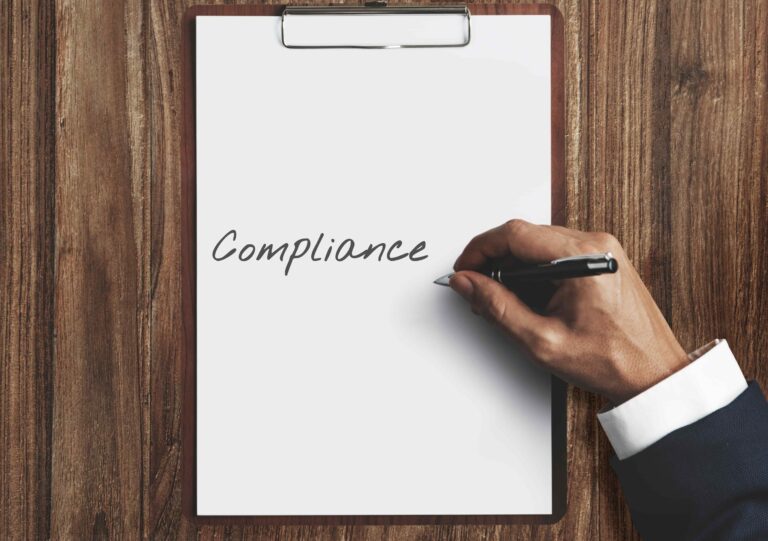Picture this: you’re building the next big fintech app, your code is clean, your UI is sleek, and your users are starting to love what you’ve created. Then suddenly, a regulatory letter arrives that makes your coffee go cold. Welcome to the world of fintech compliance – where innovation meets regulation, and where getting it right is about building trust and staying ahead.
Yes, compliance isn’t the most fascinating topic in the fintech world. But here’s the thing: it’s absolutely essential, and the companies that nail it early are usually the ones that thrive. Think of compliance as your license to operate in the financial services playground.
The New Reality: The Stakes Are High
The Wild West days of fintech are over. The global average cost of a data breach has reached $4.88 million in 2024. Add regulatory fines, legal fees and reputational damage, and here we are – looking at potentially business-ending consequences.
But here’s the plot twist: compliance done right is your competitive advantage. When customers can choose between a fintech with solid compliance credentials and one that’s playing fast and loose with regulations, guess which one they’ll trust with their money?
ISO 27001: Your Security Foundation
ISO 27001 provides a comprehensive framework for managing and protecting sensitive information. Think of this as your fintech’s security baseline, the foundation everything else is built on.
Here’s why ISO 27001 is actually your friend: it helps fintech companies seamlessly meet requirements with other regulatory frameworks. It shares controls with GDPR, PCI DSS, SOC 2, and NIST CSF. Translation? Get ISO 27001 right, and you’re halfway to meeting several other compliance requirements.
The beauty of ISO 27001 for fintech companies is that it can help you build a culture of security.
PCI DSS: The Credit Card Guardian
If your fintech touches credit card data – and let’s face it, most do – then PCI DSS is a must. The Payment Card Industry Data Security Standard applies to all businesses that accept, process, store, or transmit cardholder data, regardless of size or number of transactions.
Here’s the key insight: try not to handle credit card data directly, if you can avoid it. Use tokenized solutions where the sensitive data never touches your servers. It’s like having a professional security team handle the most dangerous part of your operation while you focus on what you do best.
The consequences of getting it wrong? Your business may be penalized by up to $100,000 a month for being non-compliant with PCI DSS. But more importantly, reports show that 60% of small firms leave business within six months of a cyber attack.
GDPR: The Privacy Revolution
If you’re handling data from EU residents, GDPR is your everyday reality. No, not a nightmare. A GDPR breach can cost up to €20 million or 4% of annual global turnover, whichever is higher.
But here’s what can be missed sometimes: GDPR and other FinTech compliance builds trust with customers, demonstrating a commitment to protecting their sensitive financial data, thereby enhancing brand reputation and customer loyalty.
The challenge for fintech is unique. Financial technology companies often encounter unique challenges related to data privacy and protection, especially with the necessity to process large amounts of information, sometimes of a sensitive nature, including financial, biometric, and even criminal record information.
Don’t think of GDPR as a burden, think of it as a competitive advantage. Demonstrating GDPR compliance positions fintechs favorably in the market, signaling a strong commitment to security and privacy.
AML/KYC: The Non-Negotiables
The cornerstone of AML/CFT regulations in the U.S. is the Bank Secrecy Act (BSA), administered by the Department of Treasury’s Financial Crimes Enforcement Network (FinCEN). When you are onboarding users, you must properly conduct Know Your Customer checks and sanctions screenings, plus comply with all fair lending laws if you are extending credit.
The good news? A notable development in 2024 is the adoption of AI-driven compliance tools designed to enhance regulatory oversight and streamline compliance processes, helping financial institutions meet AML and KYC requirements more efficiently.
The Connected Ecosystem
Here’s where things get interesting: all these regulations don’t exist in isolation. They are a part of an interconnected ecosystem where getting one right helps with the others. Many of the controls specified in ISO 27001 align with PCI DSS requirements, and organizations can use the standard to meet the PCI DSS requirements.
Think of compliance as a web where each connection strengthens the whole structure.
Your Path Forward
Start with the basics: a comprehensive compliance program should include clearly defined policies and procedures, regular risk assessments, robust data privacy and security practices, and continuous employee training.
Don’t try to do everything at once. Compliance technology, or RegTech, can help automate and streamline compliance processes, making it easier for companies to manage regulatory compliance.
The Bottom Line
Compliance is not going away, and it’s not getting easier. But companies that embrace it early and do it well don’t just survive – they thrive. They build trust with customers, attract investors, and create sustainable competitive advantages.
Remember: in fintech, trust is your most valuable asset, and compliance is about proving you deserve that trust. The companies that master compliance early will be the ones that define the future of financial services.
The question isn’t whether you can afford to prioritize compliance – it’s whether you can afford not to.







